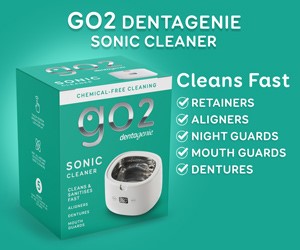
By Lexer VP of Retail Nick Hinsley.
While the holiday season continues to be one of the most impactful sales periods for every retailer, it’s not surprising that these sales can send retailers and consumers alike into a frenzy.
The holiday shopping season spans Singles’ Day, Black Friday, Cyber Monday, 12 days of Christmas special offers, followed by Christmas day, Boxing Day and New Year’s offers. This year, e-commerce and multichannel shopping are expected to dominate and increased digital competition will make personalisation a must-have.
The 2021 retail holiday season is projected to rise 11.3% on pre-pandemic conditions to $58.8 billion. To make the most of the peak holiday season, retailers should be planning their personalised holiday campaigns now if they haven’t started yet.
Still feeling frantic about the upcoming holiday season? Here, we delve into nine data-powered campaign ideas that will set retailers up for their most successful holiday season yet.
Gifting campaigns
The first step for retailers is to identify your ‘gifters’ during the holiday season, meaning customers who will be purchasing gifts for friends and family. By identifying these gift buyers in your database, you’ll be able to easily engage them at the right time each year. There are a few different ways you can identify gifters within your customer database, such as customer surveys, inferred segmentation, as well as frequency and recency of purchases.
Once you identify gifters in your database, as well as their motivations for buying gifts, you can target them with hyper-personalised marketing campaigns with gift-related messaging. For example, if you discover a gifter segment of men buying for women, you could send targeted messages including ‘gift guides for her’.
Treat yourself campaigns
During the peak holiday season, many shoppers are so focused on spending for others and need to be reminded that it’s okay to treat themselves as well. Taking stock of order history and predictive analytics, retailers should target existing customers with a ‘treat yourself’ campaign featuring products they’re likely to be interested in.
New customer rewards
When it comes to new customers, you always need to give them a warm welcome to encourage them to come back. Identify prospective customers in your database who are yet to purchase from you and reach out with special offers to drive their first purchase. For example, if you offer a discount for prospects to incentivise them to sign up for your email newsletter, you could segment your prospect database by those who signed up for the e-newsletter over a month ago and reactivate the discount for a limited time only.
Discount segmentation
During the holiday season, you’ll likely experience an influx of customers who will only ever purchase from your brand during a sale. Retailers won’t make the same margins on every customer, but you will have some customers who are willing to pay full price for products. By segmenting your database based on customers’ propensity to purchase at a discount, you can identify the discount and full-price buyers and target them with separate, personalised offers throughout holiday campaigns.
Retargeting last year’s buyers
Often, customers acquired during the holiday season will only purchase again during the next holiday season. As these shoppers are only likely to purchase during a short window of time, it’s important to target these shoppers during the holidays to grow their lifetime value. To keep seasonal buyers engaged over time, design year-round communications to keep your brand top-of-mind. That way, when the next holiday season hits, they’re still active in your database and more likely to convert.
Social campaigns for opted out customers
For most of the retailers we’ve worked with, we find that more than two-thirds of lapsed customers have opted out of email communications. Additionally, there tends to be a segment of active, high-value customers who have opted out of email as well. That means that if you’re only using email as your primary engagement channel for holiday campaigns, you could be missing out on engaging a huge portion of your database. To reach these customers, segment them by email engagement status and target opt-out customers through paid social instead.
Post-holiday up-sells and cross-sells
To make the most of the holiday season, you need to capitalise on post-holiday sales as well. Use past customer data to analyse and understand buying behaviour following holiday purchases. Identify which products customers are likely to purchase next, as well as the most likely time frame for making that second purchase. Set up an automated post-purchase email to send during this time period, with special offers and messages to drive a second sale. This will help extend the impact of holiday sales into the rest of the year.
Post-purchase surveys
Every purchase provides you with an opportunity to learn more about your customers. To collect additional information about who your holiday shoppers are, what motivated them to buy, and other critical data that will inform future holiday campaigns, send a follow-up survey after each purchase with a small discount or special offer as an incentive to respond. This strategy can not only provide additional revenue, but also deep customer insights to guide future campaigns.
Last chance scarcity messaging
Scarcity is a fantastic call to action—especially during the holiday season, when many shoppers are scrambling to cross everything off their gift list in the midst of heavily-trafficked stores and shipping delays. To encourage sales using the scarcity technique, send customers a sequenced set of count-down messages informing them of when they need to order to guarantee shipping before Christmas. You can also segment your customers into regions for more granularity with shipping timing.
About Nick Hinsley
Prior to joining Lexer, Nick Hinsley worked in retail for well-known menswear companies, Gazman and Gant, and then in traditional media for over 15 years. Throughout his career, he’s always wondered why campaign results lacked transparency, driving his passion for data and technology as enablers of high performance.
About Lexer
Lexer is recognised as the leading platform to help retailers unify customer data, better understand their customer, create segments, acquire new customers and grow lifetime value. Proudly headquartered in Melbourne, Lexer serves clients globally, including the likes of The Iconic and Billabong on home soil.





